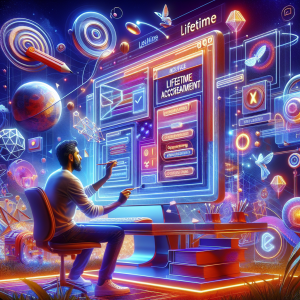Understanding the Federal Government’s Focus on AI Prompt Engineering
The federal government is stepping up its efforts to ensure its workforce is prepared for the technological advancements of the 21st century. A recent initiative aims to train federal employees in **AI prompt engineering**, a critical skill in effectively leveraging generative artificial intelligence systems. This move highlights the growing importance of AI in the public sector and the integral role it will play in shaping efficient government operations.
Artificial intelligence is no longer a futuristic concept; it is a reality that’s reshaping how organizations operate. But for generative AI to be most effective, users must interact with it in ways that produce accurate, relevant, and meaningful outputs. That’s where **AI prompt engineering** comes in.
What Is AI Prompt Engineering?
**AI prompt engineering** refers to the practice of crafting well-structured inputs—or *prompts*—to interact with AI models like OpenAI’s GPT or other generative language programs. Essentially, it’s about communicating with AI in a way that yields the desired result.
Key components of AI prompt engineering include:
- Precision: Writing clear, concise prompts to minimize misunderstandings by the AI.
- Context: Providing sufficient background information for the system to generate accurate results.
- Creativity: Framing queries that push AI’s boundaries to produce innovative or insightful solutions.
This skill is essential for unlocking the potential of AI systems, which can augment productivity and streamline business processes when used effectively.
Why Is the Federal Government Teaching AI Prompt Engineering?
Generative AI tools have the potential to revolutionize the public sector, from streamlining workflows to analyzing vast volumes of data. However, the power of these tools can only be fully harnessed if employees know how to use them effectively.
Here are some reasons the federal government is prioritizing AI prompt engineering:
- Maximizing Efficiency: Generative AI requires proper instruction to return meaningful results. Skilled prompt engineers can save hours of work by crafting precise prompts that eliminate the need for repetitive edits.
- Minimizing Errors: Poorly designed prompts can lead to incomplete, irrelevant, or even biased outputs. Training workers ensures AI use aligns with ethical standards and avoids unnecessary missteps.
- Preparing for the Future: As AI transforms industries, the federal workforce will need to keep pace with private-sector advancements.
By proactively providing training, the government seeks to make AI not just a tool, but a cornerstone of its strategy for modernizing operations.
How AI Prompt Engineering Training Will Be Rolled Out
The federal government envisions a staged rollout of its AI prompt engineering training program, with a structured plan aimed at equipping workers with practical knowledge.
Phase 1: Framework Development
To ensure uniformity in the training process, agencies are working to develop a comprehensive framework. This includes collaborating with private sector experts and academic institutions to design curricula that reflect best practices in AI prompt engineering.
Phase 2: Pilot Programs
Pilot programs will be launched in select agencies, targeting employees whose roles would benefit the most from generative AI. This approach allows the government to test the efficacy of the training modules and make adjustments as needed.
Phase 3: Widespread Adoption
Once the pilot programs have proven successful, the training will expand to include more agencies and departments. Eventually, AI proficiency may become a fundamental competency across the federal workforce.
Potential Benefits of AI Prompt Engineering Training
**AI prompt engineering** training has significant implications for improving how federal agencies deliver services and make decisions. Below are some concrete benefits this initiative could bring:
- Enhanced Decision-Making: With AI’s ability to analyze complex datasets, informed prompt engineering can result in actionable insights that improve policy-making.
- Cost Savings: Automating repetitive tasks via AI can save taxpayer dollars by reducing reliance on manual processes.
- Improved Public Services: Agencies equipped with AI tools can respond faster to public inquiries and requests, boosting efficiency and satisfaction.
- Increased Productivity: Reskilled federal employees are better equipped to perform high-value tasks, allowing agencies to get more done in less time.
Challenges in Implementing AI Training
While the initiative is promising, it isn’t without challenges. Some of the potential hurdles include:
- Ethical Concerns: Ensuring AI operates within ethical parameters, avoiding bias, and safeguarding data privacy will require strict oversight.
- Resource Allocation: Developing comprehensive training programs for a vast federal workforce takes time, funding, and expertise.
- Resistance to Change: Some employees may be hesitant to embrace new technology, necessitating tailored educational strategies to encourage adoption.
Overcoming these hurdles will be critical to ensuring the program’s long-term success.
Preparing the Workforce for a Digital Future
The federal government’s decision to invest in **AI prompt engineering training** is indicative of a broader shift toward embracing digital innovation. As generative AI continues to evolve, the ability to interact with these tools effectively will be indispensable not only in government but across virtually every industry.
Federal workers trained in prompt engineering will not only be able to harness AI in their current roles but also future-proof their careers in a rapidly changing job market.
Conclusion: Setting the Stage for a Tech-Driven Government
The federal government’s commitment to teaching workers about AI prompt engineering is a forward-thinking initiative that reflects the growing importance of technology in governance. By equipping employees with the skills to make the most of generative AI tools, agencies can improve efficiency, enhance decision-making, and provide better services to the public.
As this training program unfolds, it sets a precedent for other organizations—both public and private—on the value of preparing workforces for the digital age. This is more than just a training initiative; it’s a blueprint for a more efficient, innovative, and technology-driven government.




